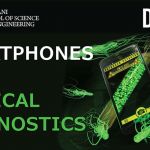Dr. Ahmad Usman is a faculty member of Electrical and Computer Engineering (ECE) at Habib University in Karachi, Pakistan. The recipient of the US Fullbright Scholarship, Dr. Usman completed his Master’s in Electrical and Mechanical Engineering and Ph.D. in ECE … Continue reading →
Read MoreDoes it surprise you when Google Ads suggests you your favorite brand, or products and services associated with your current searches? Do you find YouTube and Netflix suggestions quite appealing to your taste in videos and movie genres? Have you ever wondered about what’s happening on the back end to make your cyber routine smart, with convenience and relevance?
It is ‘data science’, the art of turning raw data into meaningful actions and data products, bringing a revolution in the world of connectivity. Weather forecasts, stock market estimates, production process improvement, health diagnosis, flu trend predictions, targeted advertising, and movie recommendations are some products of ongoing advances by data scientists, who analyze the huge amounts of data collected from browser cookies and history, among other resources.
Dr. Zeehasham, in his talk ‘Data Science Revolution’, outlined the basics of data science, describing its applications and the upcoming opportunities data scientists would have in the way we interact and explore our world.
Data analysis has been a part of formal sciences since 1939, with Deming’s work in sampling, experimental and statistical analysis. Eventually, Data Science has developed into a mature science field, through its trajectory of business intelligence systems, exploratory data analysis, efficient data search algorithms, machine learning, and the introduction of big data into the market.
Data Science is an intermixed field of Art, Data, and Mathematics, where data is acquired through data hacking, prepared for analysis through visual art techniques, analyzed through deductive (hypothesis-based) and inductive (pattern-based) reasoning, and finally, acted upon. For such an integrated expertise, data scientists are π-shaped researchers, thus demanding a depth of knowledge not only in their domain but in other related domains. Thus, some domains suggested for data scientists are statistics, machine language, optimization, visualization, programming, business development, big data, cloud computing, and communication studies.
The speaker also discussed the three stages of analytical techniques: transformation (aggregation, enrichment, and processing); learning (regression, clustering, classification, and recommendation); and predictive (simulation and optimization). However, the implementation of these techniques is guarded by certain constraints, including speed, analytic complexity, accuracy and precision, data size, and data complexity.
Finally, the talk concluded with some applications and case studies about Inter-Continental Hotels customer response prediction, Google’s flu trends two weeks ahead of the Center for Control Disease and Prevention, prediction of election outcomes, cancer research, Internet of Things (IoT), and social networking.
With the data science field growing exponentially, the impact it will leave whether on individual routines, consumer effectiveness, or industrial connections, is an inevitable revolution.
By Areej Al Medinah – Electrical Engineering 2020
(Student, School of Science & Engineering, Habib University)








